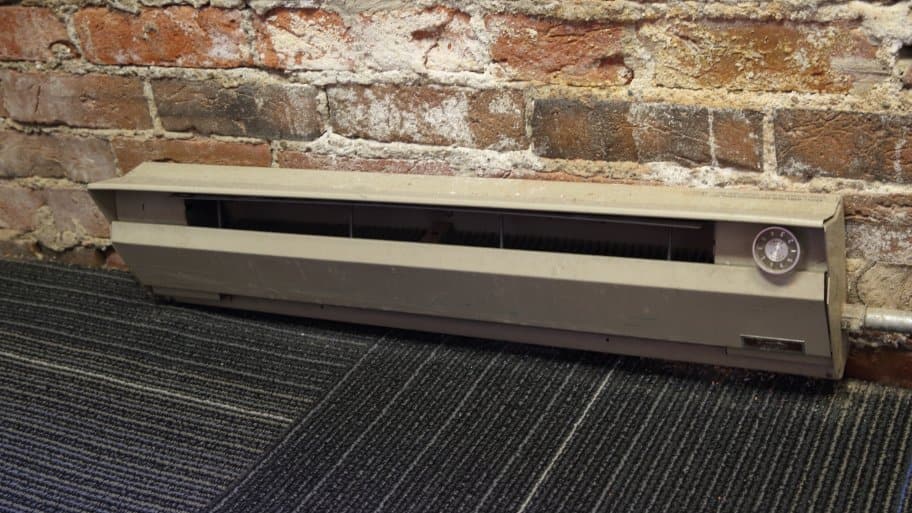Pros And Cons Of Baseboard Heating

Many homeowners face the frustrating problem of inconsistent heating – some rooms are comfortably warm, while others remain stubbornly cold. This uneven heating can stem from several issues, and when you have baseboard heating, understanding its unique characteristics is key to efficient troubleshooting. This article will guide you through diagnosing and resolving common baseboard heating problems, empowering you to take simple DIY actions while knowing when to call in the professionals.
Understanding Baseboard Heating
Baseboard heaters are a type of radiant heating that provides warmth by heating air near the floor, which then rises and circulates. They are generally electric or hydronic (hot water), and each type has its own potential issues.
Electric Baseboard Heaters:
Electric baseboard heaters use an electrical resistance element to generate heat. They are typically individually controlled by a thermostat in each room.
- Pros: Relatively inexpensive to install, easy to control individual room temperatures, and quiet operation.
- Cons: Can be more expensive to operate than other heating systems (depending on electricity rates), can dry out the air, and can pose a burn risk if touched.
Hydronic Baseboard Heaters:
Hydronic baseboard heaters use hot water (or sometimes steam) circulated from a central boiler. They tend to provide a more even and gentler heat than electric versions.
- Pros: More even heat distribution, typically more energy-efficient than electric in the long run (depending on fuel source for the boiler), and less drying of the air.
- Cons: More complex installation, potential for leaks, and slower response time to temperature changes.
Diagnosing the Problem: A Step-by-Step Approach
Before calling a professional, follow these steps to identify the cause of your inconsistent heating:
Step 1: The Obvious Checks (No Tools Required)
Start with the simplest potential causes – often, the solution is surprisingly straightforward.
- Thermostat Settings: Ensure the thermostat is set to "Heat" and the desired temperature is significantly higher than the current room temperature. It sounds basic, but it's a common oversight. Double-check the batteries in your thermostat, especially if it's digital. Low batteries can cause inaccurate readings or intermittent operation.
- Power Supply (Electric): For electric baseboard heaters, verify that the circuit breaker for the heater hasn't tripped. Locate your electrical panel and check the breaker corresponding to the affected room. If it's tripped, reset it. If it trips again immediately, there's a potential short circuit – do not keep resetting it; call an electrician.
- Obstructions: Make sure the baseboard heater isn't blocked by furniture, curtains, or rugs. These obstructions prevent proper airflow and heat circulation. Allow at least 6-12 inches of clearance around the heater.
- Air Vents (Hydronic): Check for any obvious signs of air trapped in the hydronic system, such as gurgling noises coming from the baseboard heater or the pipes. Air pockets can prevent hot water from circulating effectively.
- Physical Damage: Visually inspect the baseboard heater for any obvious signs of damage, such as dents, cracks, or exposed wiring. Any visible damage could indicate a safety hazard and warrants professional attention.
Step 2: Basic Troubleshooting (Minimal Tools Required)
If the initial checks didn't reveal the problem, move on to these slightly more involved steps. You might need a screwdriver and a multimeter for electrical heaters.
- Thermostat Functionality: If you suspect the thermostat is faulty, test it. For a simple test, you can try swapping the thermostat with one from a room that is heating properly (if they are compatible). If the problem follows the thermostat, then the thermostat is likely the issue. You can also use a multimeter to check the thermostat's continuity (for electric heaters only – proceed with extreme caution and only if you are comfortable working with electricity. Disconnect the power at the breaker before testing). A thermostat with no continuity when set to "heat" is faulty.
- Baseboard Heater Cleanliness: Dust and debris can accumulate inside baseboard heaters, reducing their efficiency. Carefully clean the inside of the heater using a vacuum cleaner with a brush attachment. Always disconnect the power at the breaker before cleaning an electric baseboard heater. For hydronic heaters, use a damp cloth to wipe down the exterior.
- Air Bleeding (Hydronic): If you suspect air is trapped in the hydronic system, you'll need to bleed the baseboard heater. Most hydronic baseboard heaters have a small bleed valve at one end. With a small container to catch water and a bleed key (or a small screwdriver, depending on the valve type), carefully open the valve until water flows out steadily, without any air bubbles. Close the valve tightly when the air is purged. Repeat this process for all baseboard heaters in the system, starting with the ones closest to the boiler.
- Element Inspection (Electric): (Warning: Only attempt this if you are comfortable working with electricity and have disconnected the power at the breaker!) Carefully remove the front cover of the electric baseboard heater (refer to the manufacturer's instructions). Inspect the heating element for any signs of damage, such as breaks or burns. If you see any damage, the element needs to be replaced. You can use a multimeter to test the element's continuity. A broken element will have no continuity.
Step 3: Advanced Troubleshooting (Professional Help Recommended)
These issues typically require specialized knowledge and tools, and attempting to fix them yourself can be dangerous or could worsen the problem. It's best to call a qualified HVAC technician.
- Boiler Problems (Hydronic): If none of the baseboard heaters are working or if the water temperature is consistently low, the problem likely lies with the boiler. Common boiler issues include:
- Low water pressure: The boiler may not be able to circulate hot water effectively.
- Faulty circulator pump: The pump that circulates water through the system may be malfunctioning.
- Burner problems: The burner may not be igniting or burning efficiently.
- Sediment buildup: Sediment can accumulate in the boiler, reducing its efficiency and potentially causing damage.
- Electrical Problems (Electric):
- Wiring issues: Loose or damaged wiring inside the baseboard heater or in the electrical circuit can cause heating problems.
- Faulty relays or contactors: These components control the flow of electricity to the heating element and can fail over time.
- Leaks (Hydronic): If you notice water leaks around the baseboard heaters or the pipes, it's important to address them promptly to prevent water damage and mold growth. A plumber or HVAC technician can locate and repair the leak.
- Zoning Issues (Hydronic): If you have a multi-zone hydronic heating system, a faulty zone valve can prevent hot water from reaching specific areas of your home. A professional can diagnose and replace the faulty zone valve.
When to Call a Professional
Here's a summary of situations where you should definitely call a qualified HVAC technician or electrician:
- If you are uncomfortable working with electricity.
- If you suspect a gas leak (for gas-fired boilers). Evacuate the premises immediately and call your gas company.
- If the circuit breaker trips repeatedly when you turn on the electric baseboard heater.
- If you see any signs of electrical damage, such as exposed wiring or burned components.
- If you suspect a boiler problem, such as low water pressure, burner issues, or unusual noises.
- If you have a hydronic system and suspect a leak.
- If you are unable to diagnose the problem after following the troubleshooting steps outlined above.
Preventative Maintenance
Regular maintenance can help prevent many baseboard heating problems and extend the life of your system.
- Clean your baseboard heaters regularly. Vacuum them at least twice a year to remove dust and debris.
- For hydronic systems, bleed the baseboard heaters annually. This will remove any trapped air and ensure efficient circulation.
- Have your boiler professionally inspected and serviced annually. This will help identify and address potential problems before they become major issues.
- Consider installing programmable thermostats. This can help you save energy by automatically adjusting the temperature when you're not home or when you're sleeping.
Final Thoughts
Troubleshooting baseboard heating problems can seem daunting, but by following a systematic approach, you can often identify and resolve simple issues yourself. Remember to prioritize safety and never attempt any repairs that you are not comfortable with. When in doubt, it's always best to call a qualified HVAC technician or electrician to ensure the job is done safely and correctly. By understanding the basics of baseboard heating and performing regular maintenance, you can keep your home warm and comfortable all winter long.










